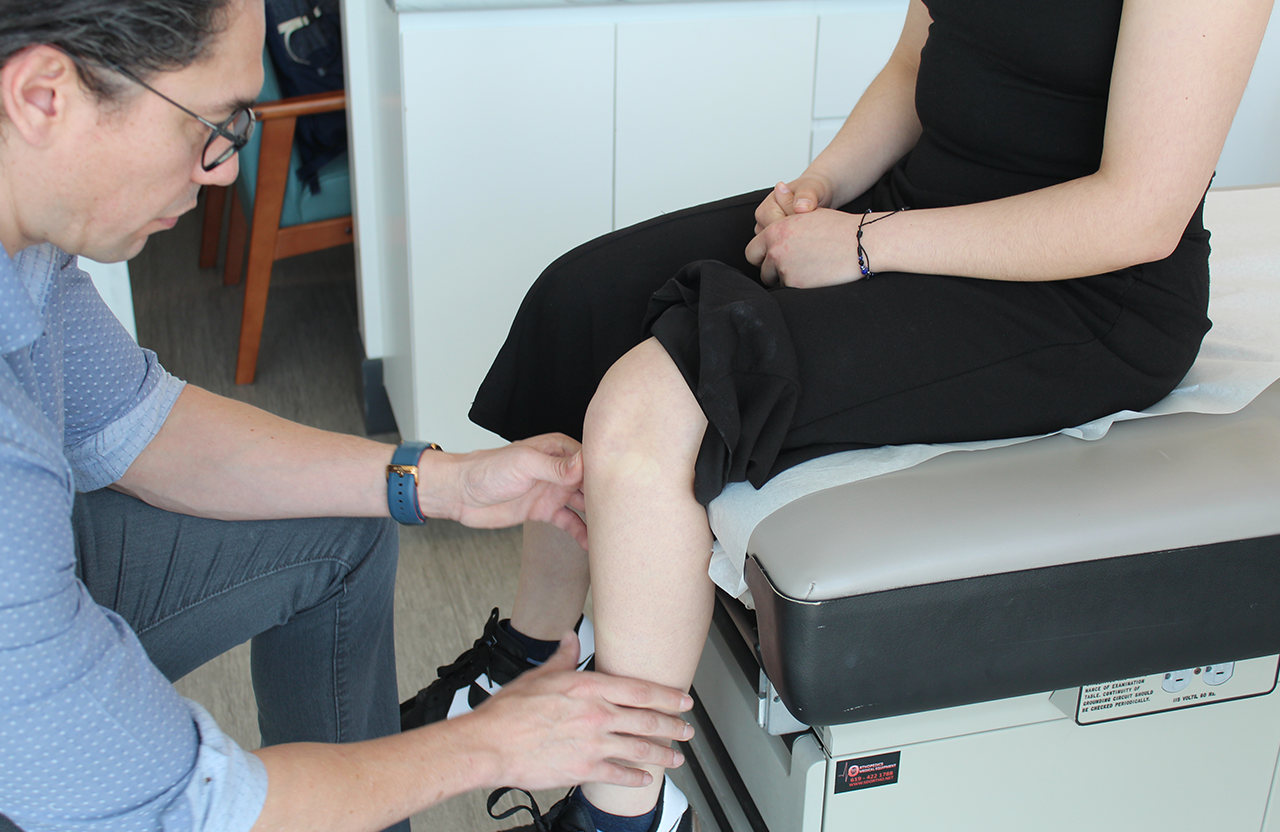Knee Pain? Arthroscopy Could Be Your Best Ally
The knee is one of the most complex joints, as it has many structures that need to work in harmony to stay balanced and function efficiently.
Muscles, ligaments and tendons function synchronously so every movement remains balanced and in place. When there's imbalance or wear in these structures, certain discomforts may appear due to overloading these parts.
What happens in a knee with wear?
The cartilage wears down and bones may rub against each other, becoming rough and irregular. This may be due to:
- Degenerative osteoarthritis (wear from age or overuse)
- Trauma (fractures or sports injuries)
- Inflammatory diseases (rheumatoid arthritis, gout)

Common symptoms:
When the articular surface deteriorates, it becomes irregular and begins to manifest with pain, decreased mobility and difficulty walking. Joint effusions or blockages may also appear that further increase pain.
A minimally invasive and brief solution - What does it consist of?
It's a minimally invasive surgical procedure that allows addressing internal damage through small incisions called portals and an arthroscope, which is a millimeter-sized camera, without needing open surgery, making it a quite brief technique.
Surgical process of knee arthroscopy
1. During this operation, the patient is usually placed supine on the operating table with the knee flexed or semi-flexed, with a tourniquet around the thigh for compression to reduce bleeding.
2. Two to three incisions are made through which the arthroscope and specialized instruments are introduced, allowing detailed examination of the joint. The affected area is repaired, then joint fluid is drained, portals are sutured and a sterile dressing is applied.

Candidates for arthroscopy
Each case has its particularities, however, the following can be treated with arthroscopy:
- Meniscus tears (common injury in athletes)
- Cartilage damage (cleaning or microfractures to stimulate regeneration)
- Cruciate ligament reconstruction (after tears from sudden twists)
- Removal of loose bodies (bone or cartilage fragments floating in the joint)
Postoperative Recovery and Rehabilitation
First 24-48 hours:
- Partial weight-bearing with crutches (avoid full support)
- Ice use to reduce inflammation
- Analgesic and anti-inflammatory medication
First Weeks:
- Dressing removal and wound care
- Gentle mobilization exercises (flexion/extension)
- Guided physiotherapy to regain strength and flexibility
Keys for Good Recovery:
- Follow physiotherapist's instructions: Prevents fibrous scars and stiffness
- Inflammation is a universal response to tissue damage regardless of whether it has been corrected or repaired. If it continues and causes pain, it's important to seek evaluation
- Patience: Complete recovery may take weeks or months, depending on the injury
